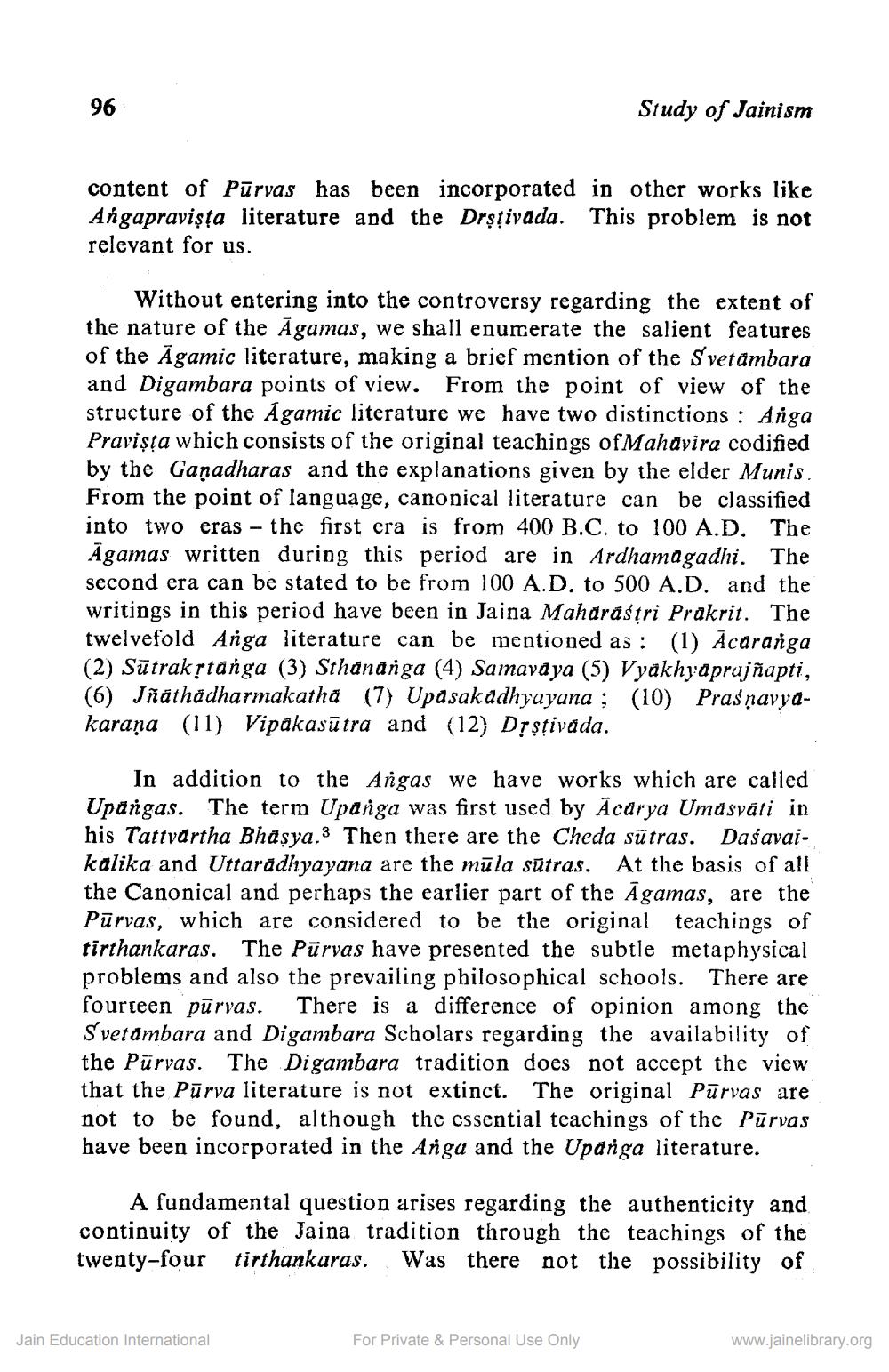________________
96
content of Purvas has been incorporated in other works like Angapravista literature and the Drṣṭivada. This problem is not relevant for us.
Study of Jainism
Without entering into the controversy regarding the extent of the nature of the Agamas, we shall enumerate the salient features of the Agamic literature, making a brief mention of the Svetambara and Digambara points of view. From the point of view of the structure of the Agamic literature we have two distinctions: Anga Pravista which consists of the original teachings ofMahavira codified by the Gaṇadharas and the explanations given by the elder Munis. From the point of language, canonical literature can be classified into two eras - the first era is from 400 B.C. to 100 A.D. The Agamas written during this period are in Ardhamagadhi. The second era can be stated to be from 100 A.D. to 500 A.D. and the writings in this period have been in Jaina Mahārāsṭri Prakrit. The twelvefold Anga literature can be mentioned as : (1) Acaranga (2) Sutrakṛtanga (3) Sthananga (4) Samavaya (5) Vyakhyaprajñapti, (6) Jñathadharmakatha (7) Upasakadhyayana; (10) Praśnavyakaraṇa (11) Vipakasūtra and (12) Dṛṣṭivada.
In addition to the Angas we have works which are called Upangas. The term Upanga was first used by Acarya Umasvāti in his Tattvartha Bhasya. Then there are the Cheda sütras. Dasavaikalika and Uttaradhyayana are the mula sūtras. At the basis of all the Canonical and perhaps the earlier part of the Agamas, are the Purvas, which are considered to be the original teachings of tirthankaras. The Purvas have presented the subtle metaphysical problems and also the prevailing philosophical schools. There are fourteen purvas. There is a difference of opinion among the Svetambara and Digambara Scholars regarding the availability of the Purvas. The Digambara tradition does not accept the view that the Purva literature is not extinct. The original Purvas are not to be found, although the essential teachings of the Purvas have been incorporated in the Anga and the Upanga literature.
A fundamental question arises regarding the authenticity and continuity of the Jaina tradition through the teachings of the twenty-four tirthankaras. Was there not the possibility of
Jain Education International
For Private & Personal Use Only
www.jainelibrary.org




